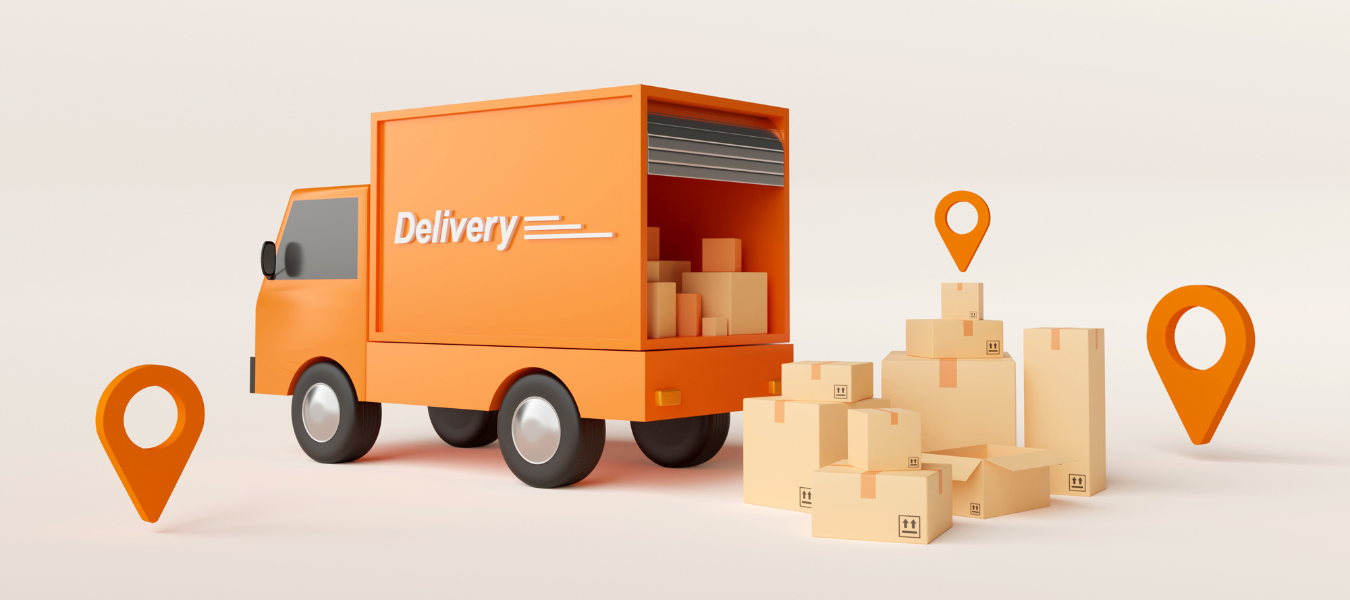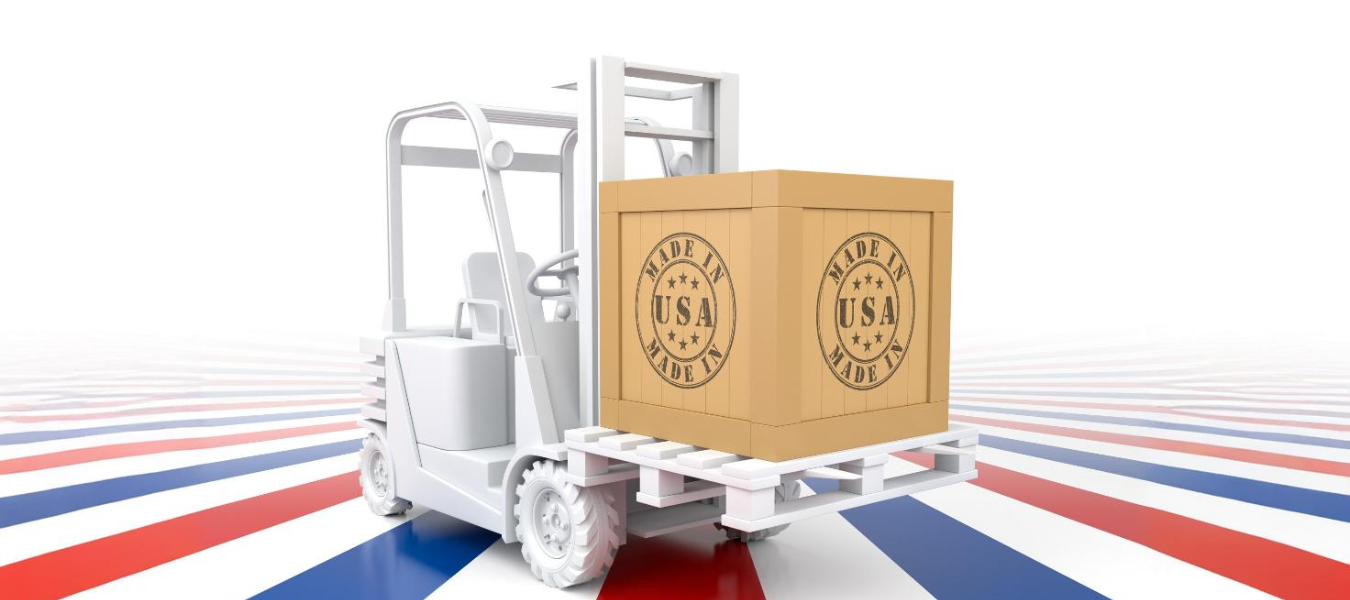



So, you’re ready to launch (or scale) your Shopify store in 2025. You’ve picked a niche, maybe even designed your store. But there’s one massive decision that stands between you and your first sale: what are you going to sell?
Product selection is not just Step 1 of building a Shopify business — it’s the foundation that determines everything else: your marketing strategy, your pricing, your customer experience, and ultimately, your success.
With more than 4.5 million active Shopify stores globally and new sellers entering the space every day, competition is intense. But that’s also what makes this moment exciting. There are more sourcing options, more tools, and more eCommerce infrastructure in place than ever before. Whether you’re dropshipping, buying wholesale, working with manufacturers, or developing your own product line, 2025 offers sellers more opportunity than any year before it — if you know where to look and how to think.
In this guide, we’ll walk you through what product sourcing actually means, where to find winning products to sell, which apps and platforms to use, and how to build a sourcing strategy that’s sustainable, scalable, and Shopify-ready.
Let’s get into it.
To begin with, product sourcing is the process of finding and acquiring products to sell through your Shopify store. But it’s not just about locating a product. It’s about choosing the right product, from the right source, at the right cost, and getting it to your customer at the right time.
In eCommerce, product sourcing usually falls into one of four categories:
Each sourcing method has its own pros and cons depending on your business goals, budget, and desired level of control. The best part about Shopify? It supports all of these models — and there are dedicated tools to help with each one.
In 2025, sourcing is no longer just about affordability. Factors like shipping speed, ethical manufacturing, sustainability, and supplier transparency have become critical differentiators. Today’s consumers expect more — and sellers need to meet that with smarter sourcing strategies.
Before we talk about where to find products, let’s quickly address why Shopify remains the go-to platform for new and experienced online sellers.
First, the infrastructure. Shopify supports every major sourcing model — dropshipping, wholesale, custom, subscriptions — and has native tools and third-party integrations for all of them. Whether you’re fulfilling orders from your garage or routing them through six suppliers across the U.S., Shopify can handle it.
Second, scalability. You can start small and grow into a full-fledged brand without switching platforms. Shopify’s app ecosystem, themes, and backend are designed to support businesses of all sizes.
Third, the marketplace advantage. Shopify integrates with marketplaces like Amazon, eBay, Walmart, and Etsy. That means your sourcing strategy doesn’t have to live in a vacuum. You can go multi-channel and grow your business.
Finally, consumer trust. Shopify is a name that buyers recognize. When they see the checkout flow, trust badges, or Shopify Payments, there’s a level of comfort that helps convert visitors into customers.
Add to that powerful SEO capabilities, mobile responsiveness, and built-in analytics—and it’s clear why Shopify is still the best place to start and grow a product-based business in 2025.
In case you need more information and insights on how to sell on Shopify or how to launch dropshipping business — stay updated on our blog posts, we’re sharing it all.
Now let’s talk about where the real action happens: product sourcing. There are four primary methods, each with its own strengths and tradeoffs. The key is choosing the one that aligns with your budget, bandwidth, and business model.
Dropshipping is still one of the fastest, lowest-cost ways to start a Shopify store. You don’t have to hold inventory or worry about packaging and fulfillment. You simply list products on your store, and your supplier handles the rest.
Well, it’s no secret that dropshipping strategy is constantly changing. While many sellers used to rely heavily on China-based suppliers, new tariffs policy and longer shipping times have pushed sellers toward domestic and region-specific dropshipping options. Platforms like Onlihub (integrated with Mysellerhub) now offer access to 300+ U.S.-based brands with 1–3 day shipping, letting you compete with Amazon on delivery speed.
Dropshipping is ideal if you’re testing products, running seasonal offers, or want to avoid upfront inventory costs. The tradeoff? Lower profit margins and less control over branding and packaging. That’s why choosing reliable suppliers is non-negotiable.
Buying wholesale means purchasing products in bulk and storing them yourself or at a fulfillment center. While it requires more upfront capital and logistics, it offers better profit margins and full control over the customer experience.
In 2025, many Shopify sellers combine wholesale sourcing with fulfillment partners like ShipBob or Deliverr to speed up shipping and simplify operations. Shopify’s inventory and fulfillment APIs make it easy to sync stock levels and send orders to multiple warehouses.
You can source wholesale products directly from manufacturers, through B2B platforms like Faire, or via supplier networks that focus on independent brands. Wholesaling also gives you more freedom with bundling, custom packaging, and branded inserts — helpful for building long-term customer loyalty.
If you want full control over your product — design, quality, packaging, margins — then manufacturing is the way to go. You can work with local or overseas factories to produce custom products under your own brand.
The downside? Minimum order quantities (MOQs), production lead times, and more complex logistics. But the upside is huge: you build a brand that’s entirely yours, with stronger barriers to entry and better margins.
Many sellers start with white-label products (pre-made items with custom branding) and scale into fully custom products once they’ve validated demand.
Whether you’re a creator, designer, or niche expert, making your own products from scratch gives you full creative control. Print-on-demand platforms, handmade goods, and digital products all fall into this category.
Selling custom products is great for building brand affinity and attracting highly engaged communities. For example, artists sell prints or apparel with their work; fitness coaches offer branded resistance bands; educators create course materials or planners.
This model works particularly well on Shopify because you can integrate tools like Printful or Gelato to fulfill orders automatically, or use digital delivery apps to sell ebooks and courses instantly.
Believe it or not, Shopify App Store has it all — sourcing platforms that not only help you find trending products, but also automate everything from importing listings to syncing inventory, managing pricing, and fulfilling orders.
Choosing the right sourcing app isn’t just about product access. It’s about reliability, shipping times, supplier trust, and how well that app integrates with your Shopify backend. Here’s a closer look at the best Shopify apps for product sourcing — and what makes each one worth considering.
Let’s start with the one we know best — and for good reason.
Mysellerhub is a 100% FREE eCommerce automation platform that helps Shopify sellers manage everything from product discovery to order fulfillment. What sets it apart in the sourcing world is its deep integration with Onlihub, a growing catalog of 300+ U.S.-based DTC and private-label brands offering fast, reliable 1–3 day shipping.
Sellers can browse ready-to-sell items, complete with optimized titles, descriptions, and product imagery. Once listed, Mysellerhub keeps everything updated automatically — stock levels, pricing, fulfillment statuses — so you don’t have to manage dozens of supplier accounts or chase down tracking numbers manually.
It’s especially powerful for dropshippers trying to escape long shipping delays or avoid the rising costs of international tariffs. And because all products are U.S.-based, Mysellerhub makes it easy to deliver the kind of fast, seamless experience modern shoppers expect.
If you want sourcing and automation in one platform — and want to work with local suppliers without extra plugins — Mysellerhub is a top-tier option.
Spocket has carved out a niche by focusing on high-quality dropshipping suppliers located primarily in the U.S. and Europe. It allows sellers to filter suppliers by location, shipping time, and product category — making it a favorite for sellers looking to reduce fulfillment times and build a more trustworthy product catalog.
In 2025, Spocket continues to improve its supplier vetting process and interface. You can import products into Shopify in just a few clicks, and their branded invoice feature is a nice touch if you want to build a more professional unboxing experience.
While it may not offer the depth of automation that Mysellerhub does for multichannel operations, Spocket remains a solid choice for Shopify-only sellers who want fast shipping, decent profit margins, and a clean interface.
AutoDS is designed for sellers who want access to a broad range of global suppliers — including AliExpress, Amazon, CJdropshipping, and more — while also benefiting from automation.
It supports bulk importing, dynamic pricing, auto-ordering, and real-time inventory tracking across thousands of products. If you still want to source internationally despite the 2025 tariffs, AutoDS can help you filter for domestic suppliers or work around high-tariff regions.
One unique feature is its product research tool, which helps identify trending products based on performance data across marketplaces. However, it’s worth noting that you may need to manually vet some suppliers for quality or fulfillment consistency.
For large stores that test many products quickly, AutoDS offers speed, flexibility, and scale.
Syncee is a product sourcing and B2B marketplace that offers access to a global network of verified suppliers, including those based in the U.S., U.K., EU, and Australia. The app is ideal for both dropshipping and wholesale sellers.
Syncee offers detailed filtering — so you can select products based on delivery time, location, and availability — and syncs with Shopify to handle product updates and inventory changes. Many Syncee suppliers support branding options like custom packaging or logo printing, which is valuable if you’re trying to grow a recognizable brand.
In 2025, Syncee stands out for its focus on supplier transparency and communication. You can contact suppliers directly within the platform, get shipping estimates, and establish partnerships that go beyond transactional sourcing.
Originally designed as a wholesale B2B platform, Faire has become increasingly attractive to Shopify sellers who want to curate high-quality, boutique-style products — especially in niches like home décor, wellness, fashion, or stationery.
While Faire’s primary audience is brick-and-mortar retailers, it’s now widely used by online sellers thanks to its expanding integrations and flexible fulfillment policies. Products are typically sourced from small brands or independent makers, and many suppliers support low minimum orders or net payment terms (helpful for managing cash flow).
It’s not the best fit for fast-paced dropshipping, but if you’re building a more premium Shopify brand and want access to exclusive products with built-in storytelling appeal, Faire is a hidden gem.
Product sourcing isn’t just about finding something to sell — it’s about finding the right product, from the right supplier, with the right economics to support long-term business growth. Especially today, with tariffs, fulfillment expectations, and consumer standards rising, smart sourcing can make or break your Shopify store.
Before choosing products for your store, here are some essential things to consider:
It’s a well known fact that today customers expect Amazon-level delivery times. If your product takes 15–30 days to arrive, you’ll likely lose the sale — or worse, deal with refunds and negative reviews. That’s why shipping speed should be one of your top sourcing priorities.
Sourcing products from the U.S.-based or local suppliers can reduce fulfillment to just 1–3 business days, helping you compete on delivery time without offering expensive express shipping. Make sure your suppliers consistently meet their promised delivery times — and ideally, offer tracking updates for customers.
A product that looks great in the listing but falls apart in real life can be devastating for your brand. Before you commit to selling anything, verify the supplier’s quality through:
Even if you’re dropshipping goods, your customer expects a seamless experience — and if the product doesn’t meet expectations, they’ll blame your brand, not your supplier.
Let’s talk numbers. If you’re sourcing a product for $12 and selling it for $20, once you subtract transaction fees, ad spend, and shipping costs, your margin might be razor thin. That’s not sustainable.
Always calculate your landed cost — the total cost after tariffs, shipping, platform fees, and fulfillment — and compare it to your retail price. Look for products with at least a 30–50% profit margin, especially if you plan to run paid ads.
Mysellerhub’s pricing automation can help you keep margins healthy even if your supplier costs shift — so you’re not constantly updating prices manually.
One of the biggest mistakes new Shopify sellers make is choosing “me-too” products — items that dozens (or hundreds) of other stores are already selling with the same photos, the same copy, and the same suppliers.
If you want to stand out, consider sourcing products that allow for custom branding, unique packaging, or bundling opportunities. Even a slight twist — like creating a themed bundle, offering educational content alongside the product, or investing in custom photos — can elevate your store above the crowd.
Platforms like Faire, or Syncee often include suppliers open to customization or white-label options. Ask about these early when evaluating your sourcing options.
Not all products can be shipped to all locations — or even legally sold. Certain categories (like cosmetics, supplements, or electronics) have stricter regulatory standards, which may include:
Make sure that product you’re sourcing is compliant in the markets you serve, and always ask your supplier about customs documentation and restricted destination support.
Even the best supplier relationships have hiccups. That’s sad, but customers may return products, orders may go missing, or defective items may slip through. That’s why it’s critical to understand your supplier’s return and refund policies before you list a product.
Some questions to ask:
Finding the right products to sell on Shopify in 2025 is no longer just a question of what’s trending. It’s about building a product sourcing strategy that’s scalable, margin-smart, and delivery-focused — because the modern eCommerce customer won’t wait three weeks for a cheap gadget, and neither should your business.
You now have access to more sourcing models than ever: dropshipping, wholesale, print-on-demand, manufacturing, and even creating your own branded product lines. And thanks to platforms like Shopify, all of these can be managed in one place — with apps and automation to simplify even the most complex workflows.
But here’s the catch: competition is tougher, costs are rising, and customer expectations are higher. If you want to build a Shopify store that lasts, your product sourcing process needs to be more than “find it and list it.” You need reliable suppliers, fast fulfillment, real-time pricing, and tools that help you adapt quickly — especially in a global economy still bouncing from supply chain shifts, tariffs, and changing regulations.
That’s exactly where Mysellerhub comes in.
With built-in access to Onlihub, Mysellerhub connects you to over 300 U.S.-based suppliers, offering fast 1–3 day delivery and zero import complications. You can browse ready-to-sell products, list them in your Shopify store with optimized content, and automate the entire backend — from pricing to inventory to order fulfillment.
Whether you’re just getting started or scaling to multiple stores, Mysellerhub removes the manual headaches and replaces them with clarity, consistency, and confidence. It’s about building a system that helps you grow with less stress and more strategy.
So if you’re ready to source smarter, sell faster, and stay ahead of the curve — Mysellerhub is the platform that makes it possible.
Start sourcing products that actually ship, actually convert, and actually support your growth.





